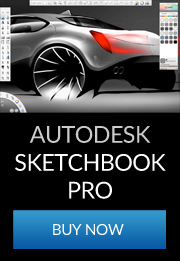2015 sees Renault update its logo; not for the first time. We take a look back at 118 years of Renault and its logos.
1898: Birth of a company
Renault was founded in 1898 by the three brothers Louis, Marcel and Fernand Renault. The company was initially called “Renault-Frères†and the first logo in 1900 featured the brother’s initials, with two entwined Rs in an “Art Nouveau†medallion. Used primarily on internal documents, this emblem was not used on brand vehicles, which could be recognized only by the name “Renault-Frères†on the running board and the initials LR (for Louis Renault) carved onto the wheel hubs.
In 1906, the medallion was replaced by an image of the Renault that won the first French Grand Prix, shown inside a gear wheel. On becoming the sole manager of the company, Louis Renault changed the name from “Renault-Frères†to “Société des Automobiles Renault†in 1910. At the end of the First World War, due to its contribution to the Allied victory by producing FT17 tanks, Renault modified its logo to feature this celebrated armoured vehicle. In 1922, Louis Renault changed again the name of its company to “Société Anonyme des Usines Renaultâ€.
In 1923, Renault decided for the first time to place a front-end logo on its vehicles to make them more easily identifiable. It adopted a round grille with the name of Renault in the centre. This logo was both functional and essential since behind the grille at the front of the bonnet was… the horn! Regulations required this function to be positioned at the front behind a metal grille. Tailored to the specific snout shape of Renault’s “Alligator†bonnet, the logo was split in two by a central line.
1925: The adoption of the diamond
The round logo of 1923 soon gained more angular contours, better suited to the dihedral-shaped bonnets with their two plane faces and central dividing line. The diamond was used alongside the round grille from 1924, appearing on the front of the 40-CV Type NM executive tourer. This geometrical symbol was definitively adopted in 1925. In the first instance, the diamond was used exclusively on luxury sports vehicles identified by the name Stella from 1929.
Over the 1930s, the identity evolved gradually and was progressively adopted across the company. During this period, the company also gained a famous brand signature: “Renault, l’Automobile de France†(“Renault, The Automobile of Franceâ€).
The nationalization of Renault on January 16, 1945 marked a change in status. The company became the Régie Nationale des Usines Renault. The name “Renault†was used as the commercial brand. The brand signature evolved to become: “Plus que jamais, Renault, l’Automobile de France†(“More than ever, Renault, the Automobile of Franceâ€). From 1946, these changes were also reflected in the diamond logo, which was published in colour for the first time on official documents. Yellow became the emblematic colour of the brand.
The diamond became indistinguishable from Renault and was included in all documents and adverts. In 1959, from the Renault 4, the cars and the sales network began to use a new, narrower logo called the Pointe de Diamant or diamond tip. The emblem still included the name “Renault†etched in slimmer lettering but the words “Régie Nationale†disappeared. Positioned in some cases on the right of the asymmetric grille (as on the Renault 8, for example), the logo was also used as a decorative feature on the body sides (particularly on the rear wings of the Renault 16). On internal documents, the black-and-white logo always had a yellow background.
1972: The famous Vasarely diamond
To further underline the strength of the diamond, the company decided in 1972 to make it wider with cleaner lines. The diamond became more prominent and the name of Renault was no longer included. The company decided to bring into play its Art & Industry policy, set up in 1967, with contributors including painter and visual artist Victor Vasarely. Working with his son Yvaral, the founder of op art created a logo based on parallel lines. The result was both simple and intricate, high-tech and visually attractive. The Renault 5 became the first model to feature the “new diamondâ€.
Since 1963, Renault asked the agency Publicis to create its advertising campaigns. In 1985, this agency came up with one of the company’s most emblematic signatures: “Renault, Des Voitures à Vivre†(“Renault, cars for livingâ€). Twenty years after the Vasarely logo, Renault decided to review its visual identity to express the quality standards embodied by the brand. The 1992 logo was equally elegant but simpler and stronger with its 3D relief. It was an emblem suggesting the quality and robust strength of brand products. Renault’s name also appeared under the diamond in each document or advert.
In 2000, the brand adopted the brand signature “Créateur d’Automobiles†(“Creator of Automobilesâ€) and updated its visual identity, placing the diamond symbol inside a yellow square to bring out its relief and substance in 2004. Three years later, the international signature became “RENAULT – Drive the Changeâ€, heralding Renault’s innovation in new territories with the arrival of the electric vehicle range.
2015: Renault – Passion for life
With the renewal of the range well underway, Renault has chosen this moment to launch a new Brand signature, ‘RENAULT – Passion for life’. At the same time as the new brand signature, Renault’s Corporate Design Department has carried out a review of the brand’s graphic identity. The Renault diamond has been made bolder and has been freed from the confinement of its surrounding outline – it now shared the attributes of the generous, higher-status, brighter logo that adorns the front of the brand’s latest models. The Renault yellow, which has been made brighter and warmer, is visible as a vertical strip to the logo’s right. This evolution concerns all the company’s marketing and communication materials – from advertising, both audio and visual (TV, print, posters, radio, etc), to websites, exhibition stands, special events, merchandising, and clothing.
Previous Post
Next Post
Leave a Reply

